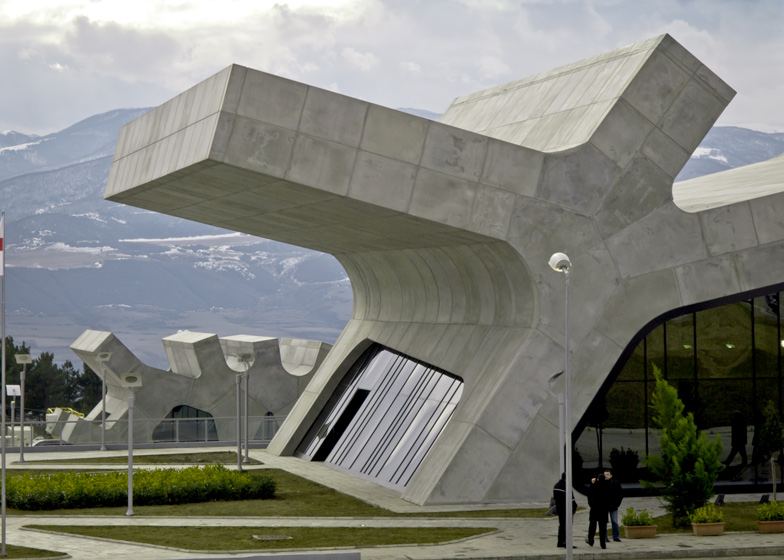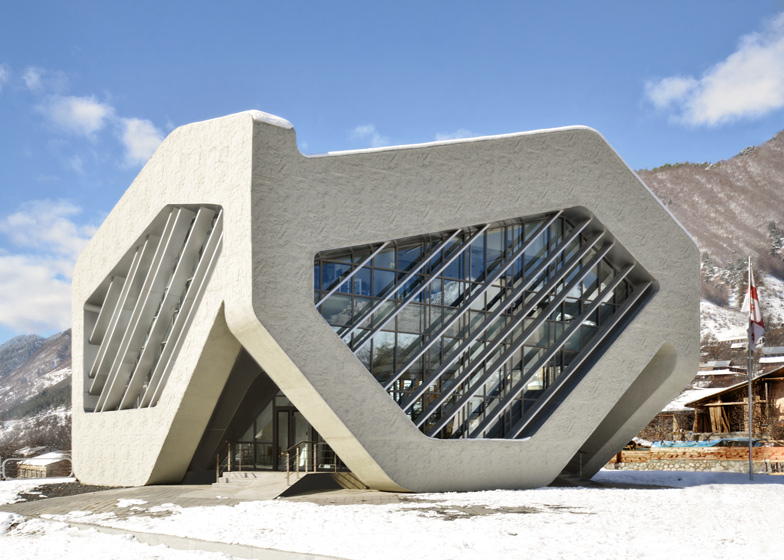In a recent post for the New
York Times, Elizabeth A. Harris featured how architectural
renderings ignite discussions for decision-making parties that determine the
success of an architectural project.
In recent weeks, two competing
illustrations have popped up in different corners of the Internet. In one of
them, eight silvery towers perch at the waterfront of Greenpoint, Brooklyn,
like a fleet of sailboats waiting peacefully for their captains. In the other,
swollen and clearly exaggerated buildings the color of sickly flamingos loom
over a diminished Manhattan skyline, threatening to swallow their neighbors in
a gluttonous fit.
Despite
their differences, these two renderings depict the same development, called
Greenpoint Landing. One illustration was created by the project’s developer
several years ago to give a sense of the permissible size and scale on that
site. The other was drawn by the project’s opponents just a few weeks ago.
Guess which is which.
“The
renderings presented to us at community meetings were coated in a gloss of
trees and leaves and flowers, and translucent towers blending into the sky,”
said Bess Long, a member of a group called Save Greenpoint, which created the sick-flamingo
rendering. “Ours was to express the brutality.”
An
architectural rendering is a premonition of sorts, an illustration of what a
park or a bridge, an apartment building or an office tower, might look like,
even before the first splash of concrete licks the ground. But its most
important mission is not to show the girth of a building’s footprint or the
shape of the windows; it is to gin up enthusiasm for a project, or to incite
resistance.
So
the real purpose of these drawings is not to predict the future. Their real
goal is to control it.
This
particular type of megaphone has a long and feisty history in New York City. In
“The Power Broker” by Robert A. Caro, for example — which chronicles how Robert
Moses plowed his vision for New York into its parks, highways, bridges and
public housing — a 1939 dispute is recalled over a bridge Mr. Moses hoped to
build connecting Brooklyn to Battery Park.
“Moses’
announcement had been accompanied by an ‘artist’s rendering’ of the bridge,”
Mr. Caro’s book explained, “that created the impression that the mammoth
suspension span would have about as much impact on the Lower Manhattan
landscape as an extra lamppost. This impression had been created by ‘rendering’
the bridge from directly overhead — way overhead — as it might be seen by a
high-flying and myopic pigeon.”
So
opponents drafted renderings of their own, Mr. Caro wrote. One illustration
included in his book shows the bridge at the forefront all but swallowing the
sad looking buildings behind it. Another includes helpful labels that detail
views blocked and light “obliterated.”
Ultimately,
President Franklin D. Roosevelt, no fan of Mr. Moses, killed the
Brooklyn-Battery Bridge.
Drawing
up an effective rendering, whether on a computer or by hand, is generally
neither easy nor cheap, which places this tool of persuasion out of reach for
most. (Ms. Long of Save Greenpoint is a former architect, and she worked with
an artist and a photographer to make the group’s rendering.) But when
architects market their services to clients, or when developers address
community boards, they often bring along a lush illustration.
“It’s
a sales technique,” said Michael Devonshire, an architectural conservator
at Jan Hird Pokorny Associates and a member of the Landmarks
Preservation Commission. “I would be surprised if any finished product ever
looked like the rendering.”
Take,
for example, an early rendering of One57, the city’s tallest and
most expensive residential tower, which puts forward the building’s most
palatable possible face, even to Andrew S. Dolkart, the director of the
historic preservation program at Columbia University, who describes One57 as
probably the
most hated building in
the city at the moment.
“This
brilliantly uses light to make the building disappear as it goes up,” Mr.
Dolkart said when asked to examine the rendering, which reflects the blue sky
and the clouds, the sun’s sharp reflected glare nowhere to be seen. “It’s like
it’s dissolving into the sky.
“And
I don’t really see the hideous colors,” he added, describing strips of
different blues that extend up the building’s skinny face.
A
spokeswoman for One57’s developer, Extell, said in a statement that the
rendering accurately represented the building’s “massing” and “tonality.”
Alfred
Bradshaw, vice president of Greenpoint Landing Associates, said the current
design for the Greenpoint project used materials like brick and casement
windows that would blend with the neighborhood’s older buildings.
Three
years ago, when Vornado Realty Trust sought approval from the City
Council to build a skyscraper down the street from the Empire State Building
and within 34 feet of its height, it, too, invoked a sparkling rendition of the
building, designed by Pelli Clarke Pelli Architects. In that rendering, 15 Penn Plaza, as the building was called, was
set, tall and elegant, against a pink Midtown sunset. The building almost
seemed to glow from somewhere deep within its base, as if lit by a big pile of
burning money.
In
response, other renderings surfaced. One showed the
silhouette of the Empire State Building and its big new neighbor, seen from a
faraway graveyard. Another offered a view of 15 Penn Plaza from the west, with
the Empire State Building peeking gingerly from behind.
In
a Council hearing, David Greenbaum, the president of the New York division of
Vornado, said he was “somewhat troubled by the grossly misleading renderings
that have been delivered to the press.” At the same hearing, Anthony E. Malkin,
an owner of the Empire State Building, testified that 15 Penn Plaza was reminiscent
of a Size 22 foot in a Size 12 shoe. “It’s just bloody big,” he said.
The
building was approved by the Council in 2010 but shelved by Vornado
this spring. Instead, the company announced that it would focus on
reinvigorating the Hotel Pennsylvania, its building on that site — and a
building that, conveniently, already exists.You
can walk over and see what it looks like right now.
New York-based architect William B. Lauder specializes in interior
design and minimalistic architecture. He turns jam-packed apartments into
spacious sanctuaries for the busy city workers. Check out this Facebook page to
see his projects.










